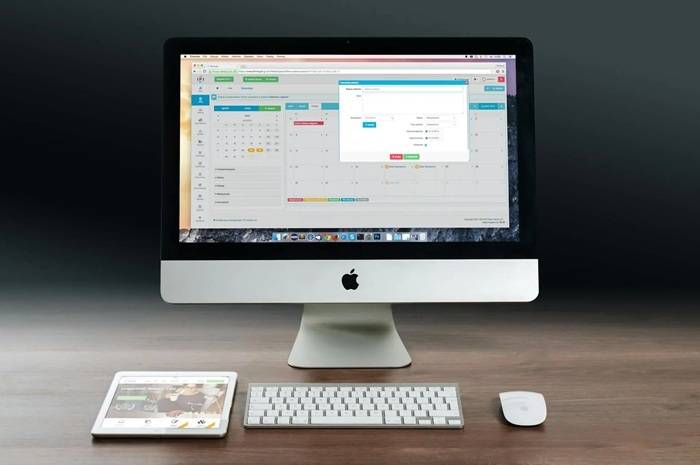
How Many Hours in a Month: A Final Breakdown for Work, Life, and Planning
Time is the most reliable constant there is, but understanding how it’s laid out across the calendar month can be hella finicky picky. If you’ve ever been like, “How many hours in a month?” don’t worry; you’re not alone. It just hinges on a couple of things, most notably how many days are in the month and whether you want total hours or standard work hours.
It is not a hypothetical one; it is used in payroll, productivity, project management, freelancing, and sleep tracking.
Here, we will be dividing the number of hours a month contains for each of the twelve months, the way leap years differ in computation, the kind of averages used in week and payroll contexts, and how one would actually proceed to compute hours for themselves or others in everyday life. We will be using examples of actual application of hours per month calculation ranging from planning workers to habits tracking and time management.
We will be demystifying the nuts and bolts of counting hours and untangling the mystery of how hours accumulate month by month.
Getting to Know Basics: Time and Calendar

A day has twenty four hours. But months?
They are unique.
30 for some, 31 for some, and February, February has 28 days in normal years and 29 in leap years. This variation changes the number of hours that a month holds.
Let’s compute:
- January (31 days) = 744 hours
- February (28 days) = 672 hours
- February (29 days during a leap year) = 696 hours
- March (31 days) = 744 hours
- April (30 days) = 720 hours
- May (31 days) = 744 hours
- June (30 days) = 720 hours
- July (31 days) = 744 hours
- August (thirty one days) = 744 hours
- September (thirty days) = 720 hours
- October (thirty one days) = 744 hours
- November (thirty days) = 720 hours
- December (thirty one days)= 744 hours
Thus by the month, there are 672 to 744 hours. That is a variation of as much as 72 hours—a full three days.
Total Hours in Each Month: Quick Summary
To keep it even more uncomplicated, here is a rough estimate of calendar-month hour amounts:
- 31-day month: 31 × 24= 744 hours
- 30-day month: 30 × 24= 720 hours
- 28-day month: 28 × 24= 672 hours
- 29-day month: 29 * 24 = 696 hours
Supposedly infinitesimal difference on paper, maybe, but considered in hourly compensation, shift work rhythms, or productivity measurement, these differences rapidly accumulate.
Average Hours per Month for a Year
There are three hundred and sixty six days in a leap year. Whether three hundred and sixty five days in one complete calendar year. That is:
- 365 days * 24 hours = 8,760 hours yearly
- Leap year: 366 * 24 = 8,784 hours yearly
Divide by twelve, and you’ll get the average monthly hours.
- 8,760 / 12 = 730 average monthly hours (not leap year)
- 8,784 / 12 = 732 average monthly hours (leap year)
So if you require an average number of monthly hours to use for overall planning or to calculate payrolls. Then 730 to 732 is a reasonable estimate.
How Many Work Hours in a Month?
Okay, let’s discuss work hours. As the majority of us don’t work 24/7.
- Most countries’ standard full-time workweek is 40 hours. Most often divided between 5 days. That’s 8 hours each weekday.
- 40 hours/week * 52 weeks/year = 2,080 hours/year
Converted to months:
- 2,080 / 12 months = roughly 173.33 work hours/month
So, for the purposes of employees’ contracts, salaries, and project management, companies generally calculate full-time work for a month as 173 hours. Based on the number of weekdays in any one month, it will be slightly adjusted:
- Short months like February = roughly 160 hours
- Weekday-dominant months = roughly 184 working hours
If your company calculates labor on actual weekdays, for example, 22 weekdays * 8 hours = 176, then such discrepancies are already included.
Why It Matters: Uses of Monthly Hour Calculations

Month-long hour counts are not mythical; they are convenient.
For Employees:
- Knowing what a month is in terms of hours is convenient to utilize in approximating time spent and maintaining control over workload and fair work-life.
For Employers:
- Precise hour monitoring affects payroll, benefits, compliance, and scheduling. Knowing approximately how many hours to anticipate avoids under- and over-scheduling.
For Freelancers and Consultants:
- Billed hourly? You’ll want to monitor monthly hours, especially if you draft monthly retainer agreements.
For Students and Parents:
- Employ month-over-month total hours in study time planning, activity time planning, or screen time planning.
For Health and Wellness:
- To compute workout sleep, exercise, or screen time by hours a month requires focus on the total number of hours.
Real-Life Examples
- You are a freelance consultant earning $50/hour and with availability during April (30 days). April has 720 total hours. You’re offering to work just 160 hours. That’s 160 x $50 = $8,000 in possible earnings.
- If you’re a payroll coordinator scheduling staff for May (31 days) and you have 23 workdays (no weekend or holiday), that’s 23 x 8 = 184 hours. When you multiply by cost per employee, you have estimated costs.
- If you’re training yourself, and you exercise or read 2 hours a day, in a 31-day month, that’s 62 hours to schedule, nearly 8% of the month.
Time Management Mistakes in Estimating Hours per Month
- Irrationally assuming all months consist of 30 days
- Not taking into consideration leap years when estimating February hours
- Utilizing 160 hours as a month while preparing payrolls
- Not taking into consideration weekends or public holidays
- Daylight saving for getting it wrong (for those to whom it applies)
The mistakes can result in payroll mistakes, bill mistakes, productivity goals mistakes, or working hours mistakes.
Tips for Managing by the Month
- Use a computer program calendar that has features to track hours
- Compute targets month by month based on work hours available
- Rank them in work and play order
- Utilize visual planners to plan hour dispersions during the month
- Include a “buffer” for get-arounds or burnout
- Record time repeats and observe how they devour your hours
- Split your targets into calendar hours (all time) and work hours (task or work time)
Sleep, Rest, and Energy Budgeting
We also forget to determine how many sleeping hours we need. Let’s determine that as well.
If you need 8 hours of sleeping nightly:
- 28-day month = 224 sleeping hours
- 30-day month = 240 sleeping hours
- 31-day month = 248 sleeping hours
A third of your time. Which is entirely fair, since 8 hours is a third of a day that does last. 24 hours. Which is why sleep, work, and play are usually the three equal thirds of our pie of time.
Daylight Savings
For regions of the world that observe daylight savings time, one month of the year loses or gains an hour:
- Spring (typically March): lose 1 hour = 743 hours rather than 744
- Fall (typically November): lose 1 hour = 721 hours rather than 720
These discrepancies are offset if you are in payroll, IT, or customer service.
Also Read: When Calls the Heart Season 11
Leap Years: The February Exception
February is given 29 days every 4 years rather than 28. This extra day has 24 extra hours that are added to the month.
- 28 days = 672 hours
- 29 days = 696 hours
This is done in years divisible by 4 but not centuries not divisible by 400 (1900 was not a leap year, 2000 is).
Monthly Hour Conversion
This is how you can change an hour to minutes or seconds when micro-planning or checking time.
- 1 hour = 60 minutes
- 1 hour = 3,600 seconds
- 744 hours (31-day month) = 44,640 minutes = 2,678,400 seconds
- 720 hours (30-day month) = 43,200 minutes = 2,592,000 seconds
- 672 hours (28-day month) = 40,320 minutes = 2,419,200 seconds
Whether you are a business administrator computing payroll, a student planning study sessions, a parent organizing, or an independent contractor with client billable hours to track, knowing exactly how many hours are in a month makes for simplicity and mastery.
RANGE OF QUANTITY: 672 to 744 hours per month. For labor, averages from 160 to 184 hours per weekday. Average monthly hours for a whole year amount to approximately 730.
With these variations now clear to you, you can:
- Plan more intelligently
- Work more efficiently
- No longer over/underestimate availability
- Enhance personal time management
Boost productivity and lower stress Your most valuable asset is time. The second you create a system for monitoring it, literally, numerically, precisely, you’re commanding your life more every month.



